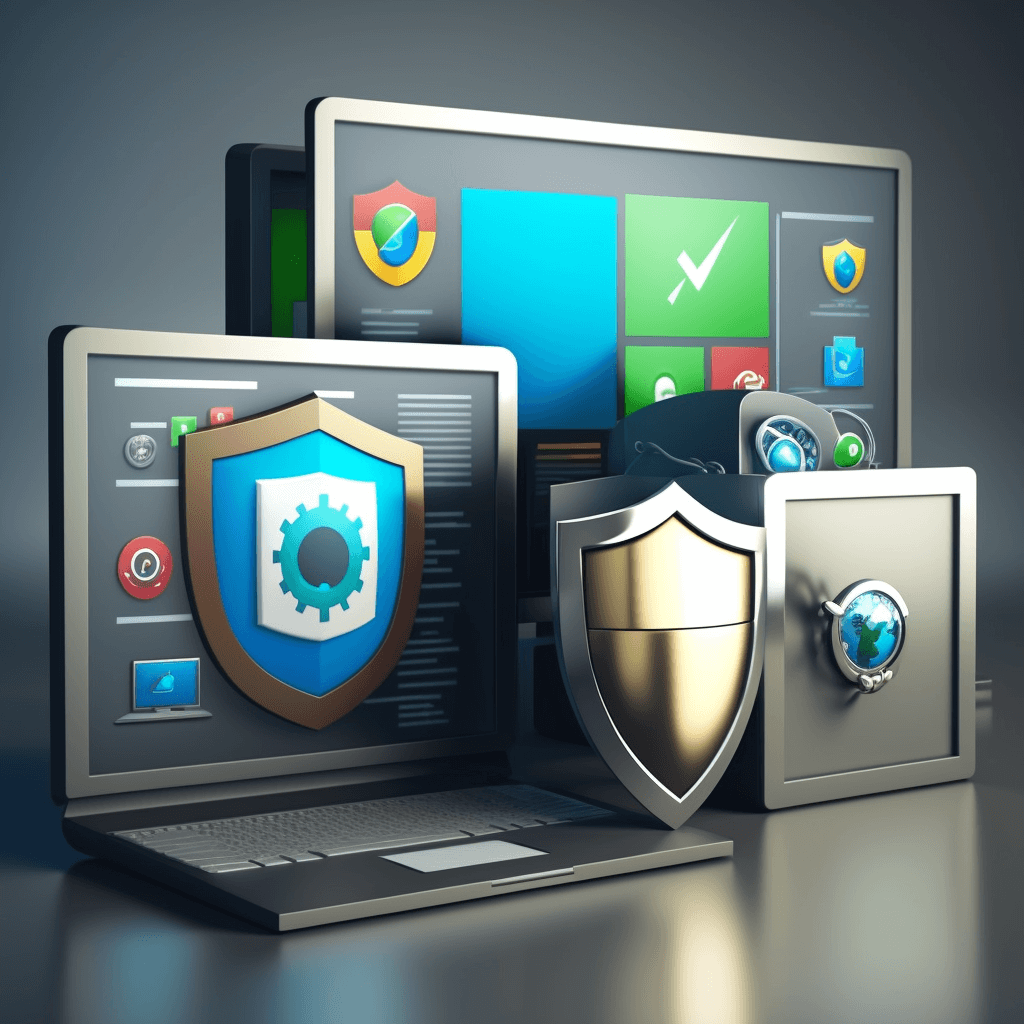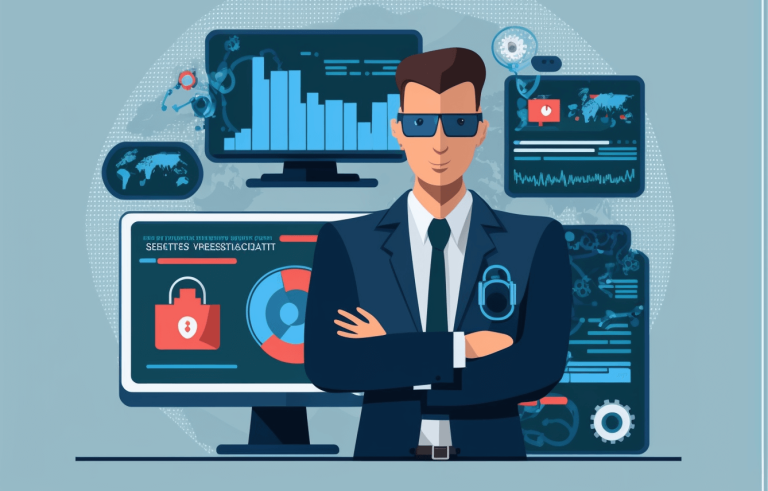How Antivirus Software and Firewalls Can Keep your Business Safe
Cybersecurity threats are coming in smarter and faster than ever and it can be hard to know where to start. You know you want to keep your business safe, but you don’t necessarily know what from.
Today we’re going to focus squarely on digital safety products. Even large businesses and government organisations with enormous budgets are vulnerable to attack, so choosing the right products is essential.
We’re going to look at the importance of antivirus software, how firewalls work to protect your network, and common types of cyber threats. Knowing what the threats and solutions are will help you choose the right products to keep your business safe.
Antivirus software
Bitdefender and Surfshark are two examples of well known antivirus products, but there are dozens of antivirus software products. Today we’re not deep diving into individual products but if you’re interested you can do that here
In the simplest terms, antivirus software of any brand protects your computers and networks against malware. This includes:
- Viruses
- Spyware
- Adware
- Other malicious programs
When it identifies any dangers, it blocks or removes them after monitoring your system for suspicious files and behaviour.
Software viruses are contagious like the human variety and can result in data loss, financial loss, or even a complete system failure. However, your company’s layer of defence against these dangers is antivirus software. You use it to stop malware from invading your system as well as finding and getting rid of any viruses that were there before installation.
You can make sure your system is constantly protected against the most recent threats by regularly upgrading and monitoring your antivirus software.
Many antivirus programs also offer additional features such as:
- Email filtering
- Firewall protection
- Internet security
All of which can further enhance your system’s security and keep your business safe from a variety of threats.
Firewalls

A firewall serves as a barrier between a trusted internal network and untrustworthy external networks like the internet. It prevents unauthorised access to your network by monitoring and regulating network traffic in both directions according to a set of security rules.
Firewalls work by inspecting data packets delivered and received by networked devices. It investigates the source and destination addresses of the packets, as well as the protocols and port numbers used to transfer the data.
If the firewall detects any suspicious behaviour, such as an attempt to access a prohibited website or a connection from an unrecognised IP address, it will block traffic from entering or exiting the network.
There are several types of firewalls:
Network-based devices are hardware installed between your network and the internet. If you don’t currently have one and want a free way to try one out we discuss your potential options here.
Host-based firewalls are software applications that are installed on individual devices, such as a laptop or server.
Cloud-based are virtual firewalls, hosted in the cloud and used to protect cloud-based applications and services.
Common Types of Cyber Threat
Malware. Malicious software is designed to damage, disrupt, or gain unauthorised access to a computer system
Phishing. This is a term used to describe fraudulent attempts to obtain sensitive information, such as passwords or credit card numbers. It comes disguised as a trustworthy entity in electronic communication.
Ransomware. A type of malware that encrypts a victim’s files and demands payment in exchange for the decryption key.
DDoS (Distributed Denial of Service) attacks. Multiple compromised systems are used to flood a target system with traffic, causing it to become unavailable to users.
Insider threats. Internal threats, such as those posed by workers or contractors with access, compromise sensitive data, whether knowingly or unknowingly.
Social engineering. The use of deception or manipulation to trick people into divulging sensitive information or performing actions that can be exploited by attackers.
Advanced Persistent Threats (APTs). This is a sophisticated and targeted attack. Rumoured to be state-sanctioned – think the Lazarus Group – APTs multiple stages and methods to breach a specific target.
Unpatched software vulnerabilities. Exploiting weaknesses or flaws in software that have not been updated with the latest security patches.
Physical security threats. Threats that come from physical access to sensitive areas or assets, such as theft or destruction of equipment or data.
Password attacks: Attempting to guess or steal passwords to gain unauthorised access to computer systems or data.
For a more detailed look at the threats above check out How to Protect Your Business Against Common IT Security Threats
Choosing the Right Products

When choosing digital products for your business, it’s very easy to get overwhelmed with the number of options and features on display. It’s important to consider several criteria to narrow it down and make the right choice, such as;
Business Needs
Consider your business goals, operations, and security requirements to determine what types of digital products will best support your business. For example, if you handle sensitive customer data, you may need more advanced security measures than a company that primarily uses their computers for basic office tasks.
Compatibility
What infrastructure have you already got in place, and who is going to use the products you choose? Ensuring the digital products you choose are compatible with the skills and experience of your workforce as well as the hardware and software you already have will prevent compatibility issues and ensure smooth integration.
Features and Functionality
Consider the features and functionality of the digital products to ensure they meet your specific needs. For example, if you need antivirus software, ensure it provides real-time scanning, automatic updates, and protection against different types of malware.
Ease of Use
Choose digital products that are easy to use and manage. Nobody wants to get a degree in order to be able to set them up and maintain them. Making it easier for your team to use them will save time and result in them using them most effectively.
Reputation and Reliability
Before purchasing any digital products, it’s crucial to research the reputation and reliability of both the products and their provider. Check product reviews and trust pilot ratings
Cost
There’s no point trialling a product that just won’t fit within your budget. However, you need to also keep in mind that the cheapest option is not always the most effective or reliable. There’s a fine line between saving money and investing a little bit more in high-quality digital products now that will save you money in the long run.
Check out our affiliates page for some great deals on premium software that may be exactly what your Business needs.
Maximise the Effectiveness of Digital Security Products
Here are some tips and best practices for you to follow to maximise the effectiveness of using digital security products to keep your business safe.
Update and patch
Regularly update and patch all software and applications. This includes antivirus software, firewalls, and operating systems. By regularly updating and patching software, any vulnerabilities are fixed, making it harder for cybercriminals to exploit them.
Add layers
Multi-factor authentication adds an extra layer of security to your accounts by requiring users to provide information beyond just a username and password. This might include a fingerprint scan or a one-time code sent to a mobile device.
Never stop teaching
Employees are often the weakest link in your cybersecurity, so it’s important to provide regular training. Topics like ‘how to identify and avoid phishing emails’, ‘using and updating strong passwords’, and ‘following best practice guidelines’ should all be regularly revisited. As well as being the weak link, it’s important to remember that your employees are the first line of defence to keep your business safe, so try and encourage them to be vigilant rather than berate them for not being.
Back it up
Regular data backups ensure that in the event of a cyberattack or other data loss, your important business data can be restored quickly and easily. We talk in detail here about Why Data Backups are Essential for your Business.
Stay vigilant
By monitoring network activity, you can identify and respond to suspicious activity before it even turns into a security breach.
Control access
Access controls ensure that only authorised users can access sensitive data or systems. They involve requiring strong passwords, limiting access to certain systems, and implementing role-based access controls.
Audit
Regular security audits can help your business identify vulnerabilities in your systems and processes before cybercriminals can exploit them.
Plan for the worst
In the event of a security breach, having a response plan in place will help your business quickly and effectively respond to the incident, minimising the damage caused.
Physical Security
Slightly outside of the remit of this post however a very important factor which we have discussed at length here. Top 5 Physical Security Products Every Business Needs
Conclusion
In today’s digital landscape, cyber threats are a constant concern for businesses of all sizes. Consequently, the potential damage from a cyber attack can be devastating. Damage can range from financial losses and reputational damage to the loss of valuable data and intellectual property.
By following our tips, and taking a proactive approach to cyber security, you can maximise the effectiveness of your digital security products and better protect important data and systems. With the right combination of products, policies, and practices, you can keep your business safe and ensure you’re well-equipped to defend against the ever-evolving landscape of cyber threats.
Next steps
Check out our Deals page to get some discounts on products that will work for.
If any of this seems daunting and you would like some help feel free to contact us. or check our post The Benefits of Outsourcing your IT Services and see if it may be the right step for you.







